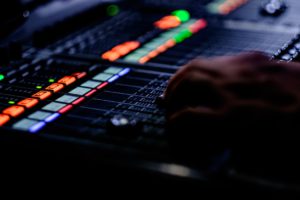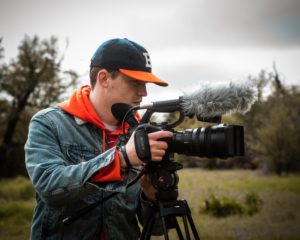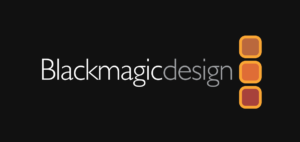A storyboard artist, also known as a story artist or visualizer, is a person who can take a script, or even just a concept, and turn those words into a visual story. Storyboard artists play important roles because they control how others perceive a project. Everyone in a production and development team looks at storyboards for reference. Clarity and energy of the panels are greatly important. Think of it this way: You’re transforming dialogue and description of a script into comic book form.
What Does a Storyboard Artist Do?
If you’re thinking about becoming a storyboard artist, you’ll want to understand everything the job entails. Using pictures (storyboards), a storyboard artist helps to develop a story and its characters. Storyboard artists work during the planning stages of a project. They may work on a variety of projects, including:
- Advertisements
- Cartoons
- Movies
- Music videos
- Television shows
- Video games
As a storyboard artist, you will need to create visualizations of scenes in still images. You’ll do this using either paper or a computer. You’ll work with a film or television director to understand their vision and help them achieve it. When the director is on set and preparing for a shoot, they’ll have your storyboard as the guide to help them make sure they get what they want.
A storyboard artist needs to work with clients, producers, and/or directors to help them picture the final version of their project. You do this by creating a visual, step-by-step process of your project through storyboards. In addition to story and character development, you will work on details such as backgrounds. You may also work with other staff on a film such as the director of photography, production designer, art director, and even writers.
Duties of a storyboard artist may include:
- Creating images using paper or computer programs
- Conducting research for projects
- Developing a story by working closely with other creative staff and animators
- Editing, adding, and eliminating scenes as the final product develops
- Making changes to the storyboards based on feedback
- Meeting and discussing projects with directors, clients, etc.
- Reading and interpreting scripts
How to Become a Storyboard Artist
Storyboard artist requirements go from the obvious (you need to know how to draw) to more nuanced requirements. Because you’ll be translating a script into visual form, you should understand the filmmaking process and have knowledge of film in general. This includes knowing about filmmaking techniques and camera angles — after all, you’ll get input from a director and need to know what they want from you.
Education and Training
Formal education is not necessarily required, but most storyboard artist jobs typically ask for a bachelor’s degree at minimum. You won’t find a specific storyboarding degree, so aspiring storyboard artists may pursue a variety of artistic majors or degrees, including:
- Animation
- Fine arts
- Game design and development
- Graphic design
- Photography
Some storyboard artists first go to art school and then go to film school to gain the breadth of skills working as a storyboard artist requires. Others are naturally talented at drawing and study film on their own.
Experience and Skills
Drawing is a required skill for this job. You will need to understand perspective so that you can demonstrate camera angles, and you should be able to communicate the performance of characters as well. Skills for successful storyboard artists include:
- Artistic talent
- Communication skills
- Computer skills
- Drawing
- Filmmaking, including knowledge of:
- Composition
- Editing
- Lighting
- At least some background knowledge of acting
- Narrative storytelling, including knowledge of:
- Story structure
- Writing
- Analytical skills
- Proficiency with editing, drawing, and graphics software
- Public speaking skills
Personality
Successful storyboard artists are easy to work with. A winning combination includes being easygoing, offering ideas, and being able to get things done. You’ll also need to be respectful under pressure.
Building a Portfolio
As with many artistic fields, storyboard artists should create a professional portfolio demonstrating their artistic work, skills, and abilities to potential employers or clients. You will need to build a portfolio that fits the level of the job you want.
What to Expect as a Storyboard Artist
Your storyboarding process, as well as the latitude you’ll get as an artist, will depend a lot on the director you’re working with. Some directors may take a prescriptive approach, while others give the storyboard artist creative freedom when interpreting a script. Either way, you want to maintain a positive working relationship with your director, adapting and playing by your employer’s rules.
Storyboarding Career Advancement
Many employers prefer to hire candidates for storyboard artist positions with a bachelor’s or even master’s degree, as well as experience. Sometimes storyboard artists with great talent but little formal training can be hired for entry-level roles.
You can gain experience through an internship or entry-level job before progressing to a storyboard artist position. A common trajectory after becoming a storyboard artist might be storyboard artist to story supervisor to director.
Job Outlook
There’s a big demand for media content, especially in terms of streaming services. The Bureau of Labor Statistics (BLS) reports that employment for fine artists is expected to grow 6% between 2016 and 2026.
Because storyboard artists are fine artists, you can find more extensive job opportunities in a variety of fields beyond entertainment. Fields and industries in which a storyboard artist might find a job include:
- Advertising agencies
- Animation studios
- Architecture
- Education
- Film studios
- Forensics
- Game development companies
- Government
- Graphic design
- Legal
- Medical and healthcare
- Publishing
- Science
- Television studios
Lifestyle and Employment
Many storyboard artists are freelance artists. You have to be prepared to work on short deadlines, often with long and even overnight hours. Some studios hire full-time artists as well.
Potential Challenges
You need to be flexible and able to accept criticism. Often, you’ll need to rework scenes again and again. Most storyboarding roles also come with significant pressure.
Salary
According to the U.S. Bureau of Labor Statistics, the median salary for multimedia artists and animators in 2018 was $72,520. The top industries included:
- Advertising
- Computer systems design
- Motion picture and video
The median salary in 2019 for craft and fine artists was $48,760.
Storyboard artists may be paid either on an annual wage basis or hourly, depending on if they are permanent employees of a studio or company, independent contractors, or freelance. The median hourly wage for storyboard artists according to the BLS is $30.76.
Unions, Groups, and Associations
The Animation Guild is a great resource for storyboard artists.
Getting Started
You can develop your skills by exploring some resources.
Storyboard software:
- StudioBinder
- Moviestorm
- FrameForge
- ShotPro
- Storyboard Quick
- Storyboard Artist Studio 7
- Toon Boom StoryBoard Pro
- Storyboard Fountain
- Storyboard Composer
- Storyboard That
- FrameForge 4
- Boardo
Books to read:
- Drawn to Life by Walt Stanchfield
- The Illusion of Life by Frank Thomas and Ollie Johnston
- The Five C’s of Cinematography by Joseph Mascelli
- Into the Woods: A Five Act Journey Into Story by John Yorke
- Save the Cat by Blake Snyder
- Story by Robert McKee
- The Storyboard Artist by Giuseppe Cristiano
- Paper Dreams by John Canemaker
Further resources:
- Sample resumes of storyboard artists
- Sample cover letters
- Storyboard Artists Unite!
- Professional Storyboard Artists
- @DanPovenmire on Twitter
- @leomatsuda99 on Twitter
- Art challenges
- Example of an artist
- Advice from Ted Mathot
If you’re interested in becoming a storyboard artist, you can learn more about film and how you can improve your skills by applying to the Nashville Film Institute here.
















